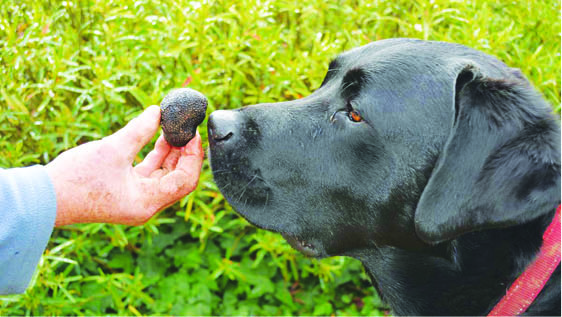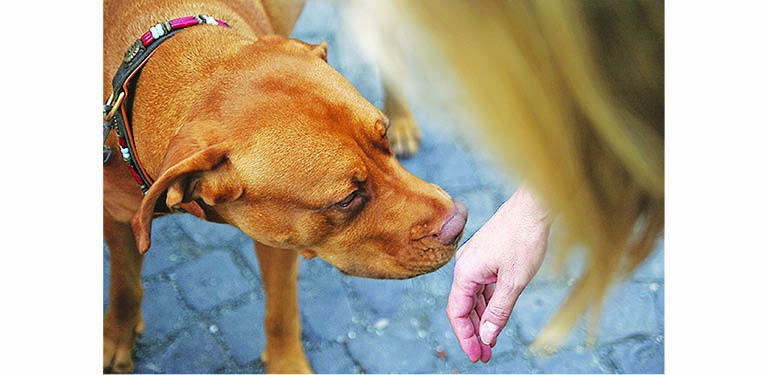Your dog has the same senses as you do – smell, sight hearing, touch and taste – but of all the sense his sense of smell is the most powerful. Here are some interesting facts on a dog’s scenting powers.
 Scent Cells
Scent Cells
A dog has around two hundred million sensitive cells in its nose compared to a human’s five million, so its sense of smell is around forty times better than ours. A dog’s sense of smell is made even stronger by an organ in the roof of the mouth that humans do not possess. This enables it to ‘taste’ a smell, turning a weak smell into a stronger one. This sensitivity to smell, especially butyric acid emitted in sweat, enables a dog to pick out the ball belonging to its owner from several balls thrown by different people. It also enables Bloodhounds to track an escaping convict up to hundred miles. Because their sense of smell is so good, dogs can do a lot of useful jobs, including:
- Finding a missing person.
- Detecting drugs like heroin, marijuana and cocaine hidden in suitcases even when surrounded by something strong-smelling, like perfumes.
- Detecting bombs. They are trained to detect the acid in nitro-glycerine and the sulphur in gunpowder for work with explosives.
- Rescuing people buried in avalanches and earthquakes.
- Detecting cancer and epileptic seizures.
Here’s How A Dog’s Nose Works…
A dog’s ability to smell the world around him and to interpret these smells depends upon a complicated chemical sensing system. Unlike us, the dog has mobile nostrils that help him determine the direction of the scent. When a dog takes a short deep sniff (rather than normal breathing), moisture on the surface of a dog’s nose helps to capture scent molecules in the air and dissolve them. These molecules then come into contact with the olfactory membranes deep inside the dog’s nose, which send nerve impulses to the olfactory centre of the brain (which is forty times larger in ratio to the olfactory centre of a human brain). These nasal membranes cover the nose’s wafer-thin turbinate bones and have convoluted folds to ensure that the minutest amount of scent can be captured within them and assessed accurately.
 Did You Know?
Did You Know?
Facts on scenting:
- We all give off cells, gasses, vapours and odours which act like smoke. So dogs, who have forty-four times the sniffing power of humans, can pick up the scent and follow it.
- A much larger part of a dog’s brain is devoted to processing smells than yours.
- Dogs can be trained to ride in anything from helicopters, trucks, and boats, to sling harnesses and chair lifts!
- Some search dogs locate people buried under the snow of avalanches, search for evidence in crime, and find people in the water.
- Cloudy days, mornings and evenings are the best times for dogs to search.
- Dogs navigate in brush better than humans.
- Depending on the conditions, dogs can pick up a scent up to a half a mile away!
- The canine nose is normally cool and moist, but not wet. It has no sweat glands – the mucus lining causes the moisture. The nose is generally dark-coloured, but may be pinkish or spotted on some dogs.
Chew On That!
In 1994, Sweden’s Environmental Protection Agency hired an Alsatian and a Labrador to help clean up the mercury pollution in the country. The two dogs, Froy and Ville, sniffed their way through hospitals, dentists’ surgeries, factories and schools, finding mercury in sinks, crevices in the floor, bottles, laboratory cupboards and the sewage system. Within five years, the team traced more than three tonnes of the highly toxic metal, saving the Swedish government $2.47 million in clean-up costs!
- The Dark Side Of Pampered Pets: Is Your Kindness Harming Your Dog? - 16 March2024
- Kids And Preventing Dog Bites - 18 March2023
- Ordinary Dogs With Extraordinary Jobs - 13 August2022
